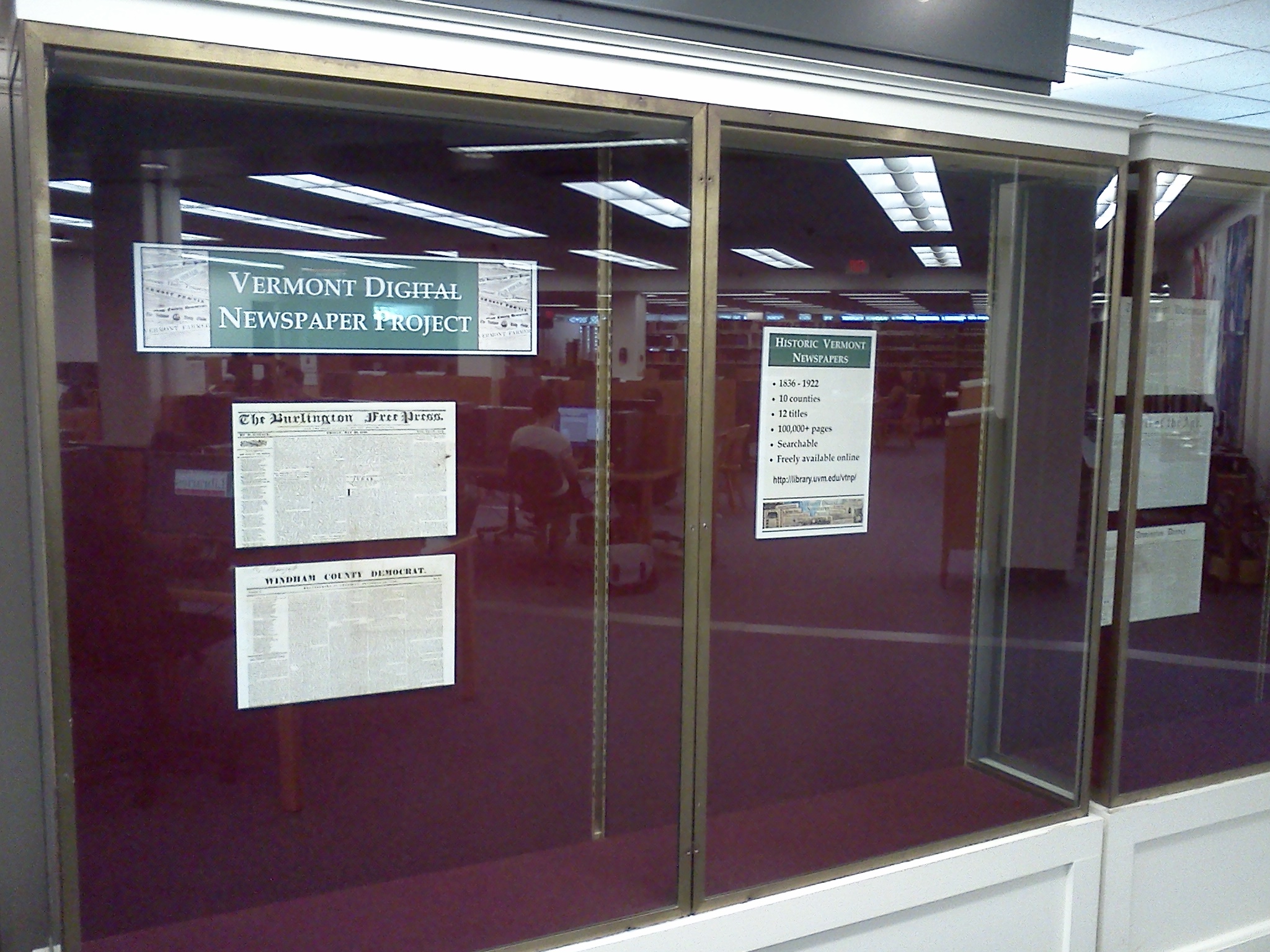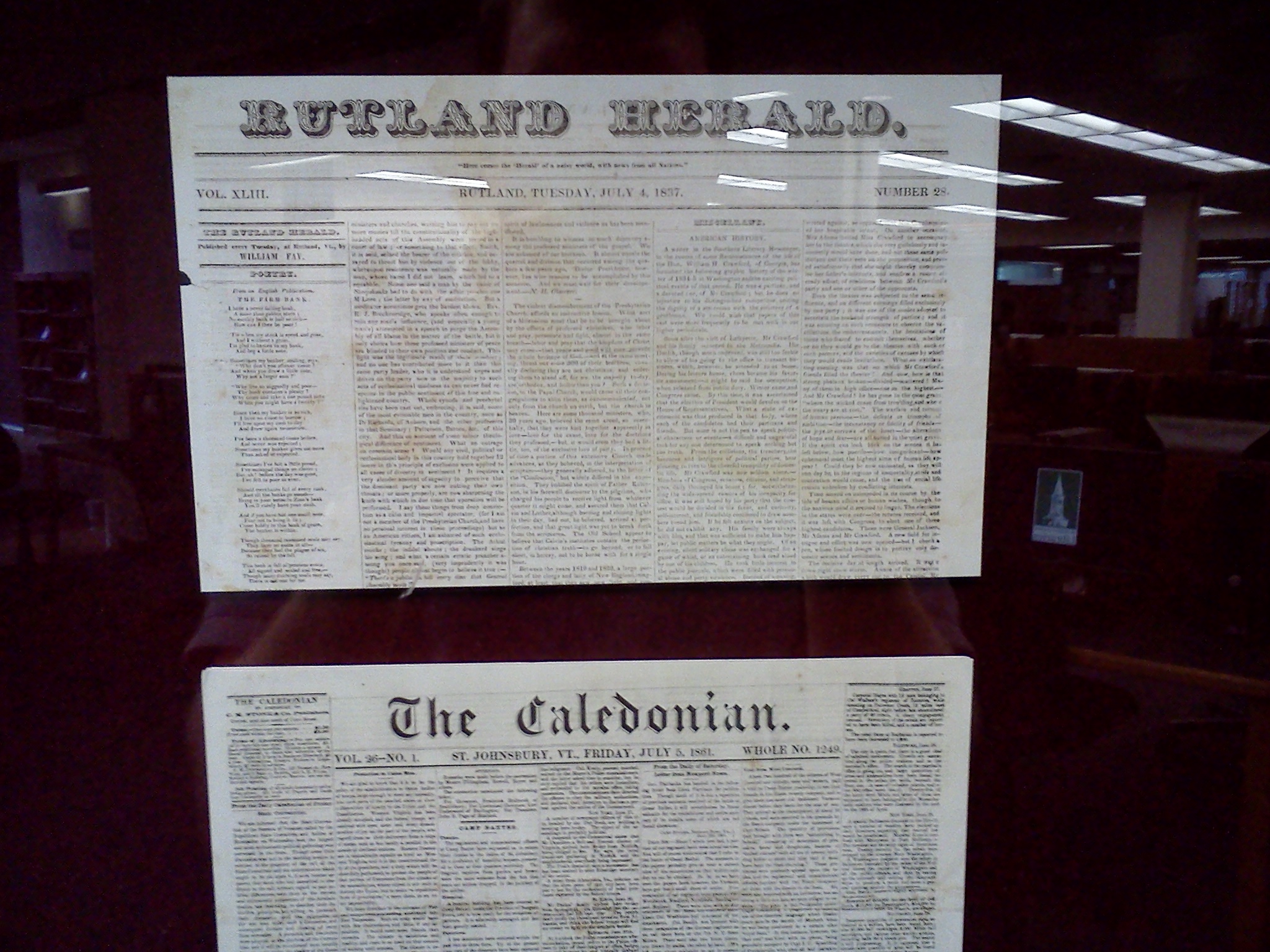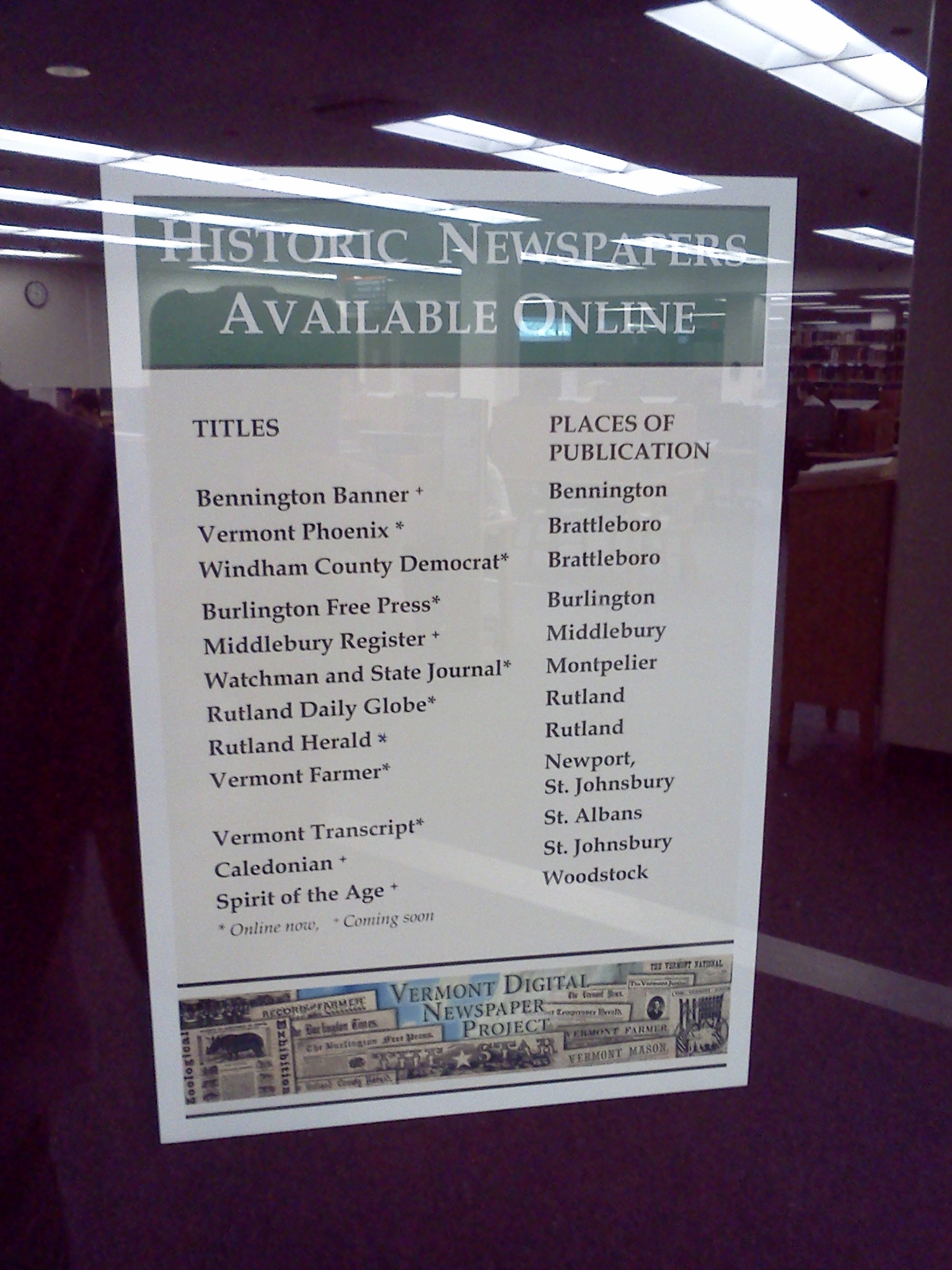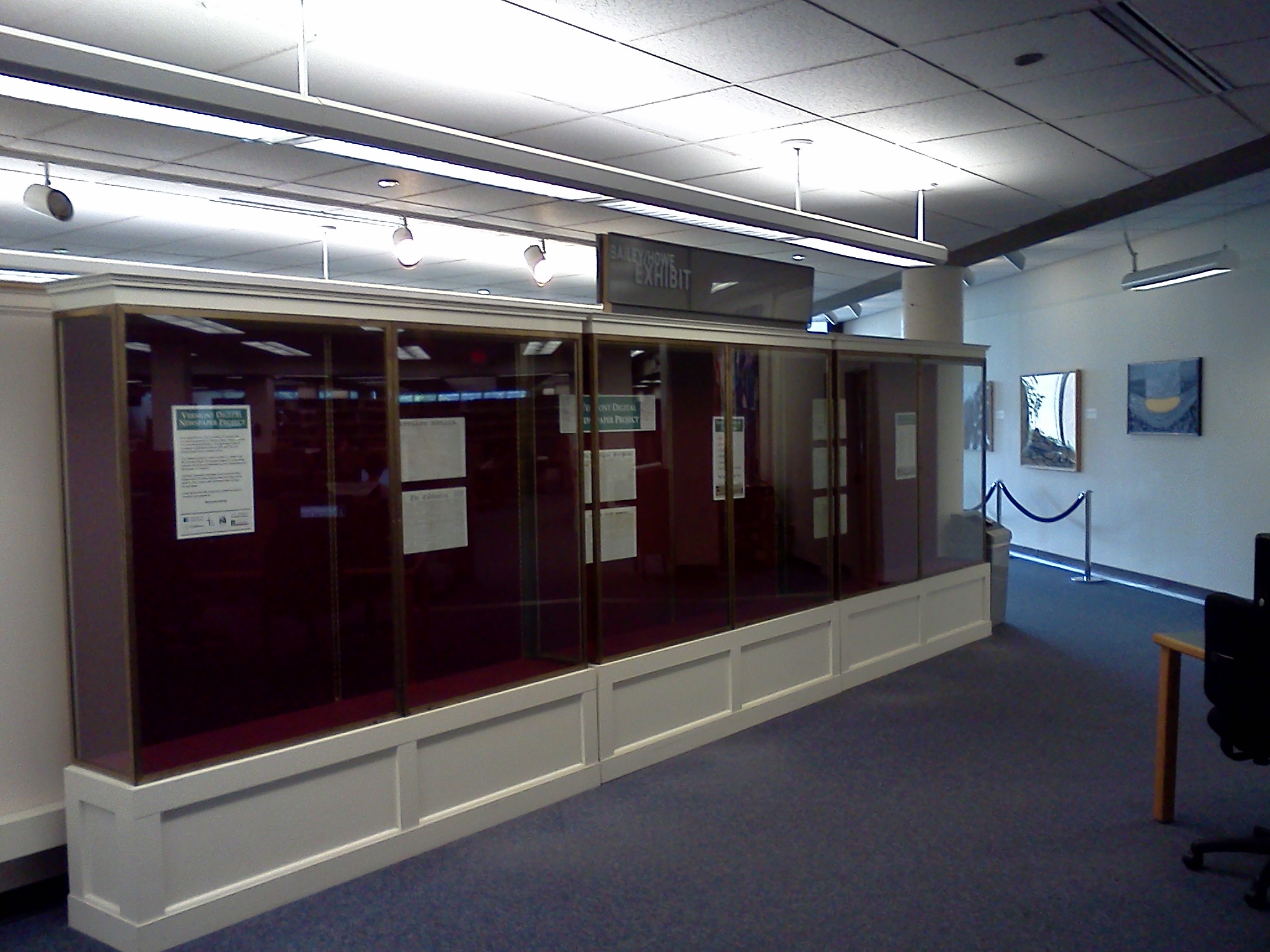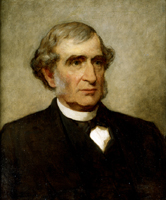This Thursday, August 16th, marks the 235th anniversary of the Battle of Bennington, a significant conflict in the American Revolutionary War. The battle actually took place nearby in New York, but was named for the site where weapons and supplies were stored, the very supplies that were being fought over in the battle. The British, led by General John Burgoyne, were reduced in number and deprived of supplies that later forced them to surrender at Saratoga.
Nearly a hundred years after the battle, a group of historians and history enthusiasts wished to commemorate the battle with a monument at the military supply storage site in Bennington. The group began their plans in 1875 and by 1876 an official Bennington Battle Monument Association had been established to develop plans for the monument. The Bennington Battle Monument is the tallest structure in Vermont, and the engineering that it took to build it was nothing short of impressive.
The clipping below shows the importance of the monument not only to Vermont’s history, but to the Northeast and America as a whole. This article from February of 1878 informs us that the governors of Massachusetts and New Hampshire were invited to the discussions of the association as well as Vermont’s own governor.

The importance and significance of the monument can be seen in the next clipping’s declaration, that, “in the end, a monument will be erected of which every Vermonter and every citizen of the United States will have reason to be proud”.

The previous clipping and the next both discuss the issues with financing such a large project.
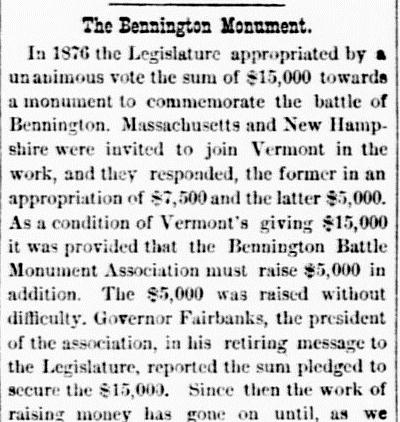
The following clippings outline the design of the monument, as well as illustrate the opinions and disagreements of those in the position to hold design approval.
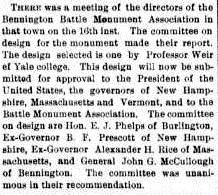
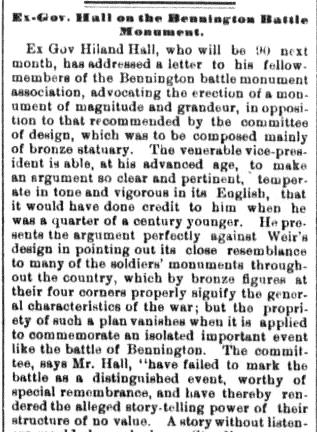
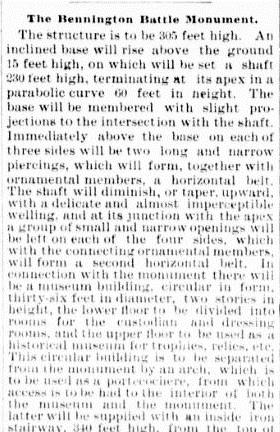
Finally, we begin to see the monument in its final stages, and the preparations for its dedication that coincided with Vermont’s centennial celebration.

But not all citizens of Bennington were pleased with the outcome. Below is an editorial from one of them who seeks to remind fellow townspeople of the true motivations behind such projects.
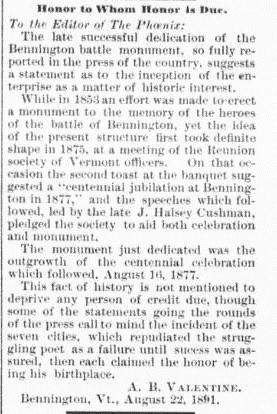
To read more about the monument or for visitor information, look here, here, or here. Also, be sure to check back later at Chronicling America for upcoming digitized issues of the Bennington Banner, which will be sure to have its own perspective on the history of the monument.
– Sally Blanchard


